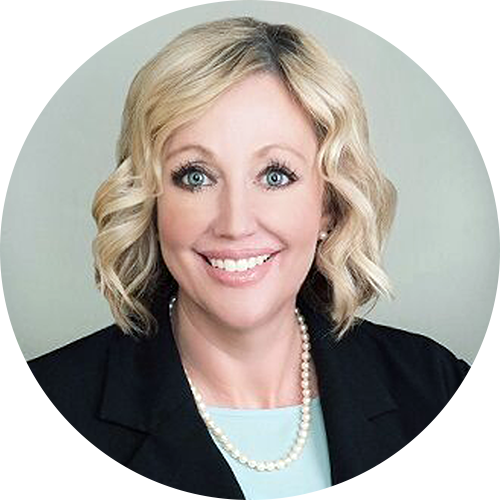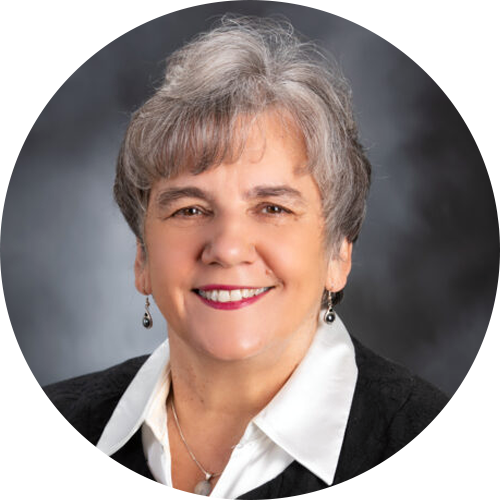Data suggests that those who are pregnant may have an increased risk of severe illness and poor pregnancy outcomes from the COVID-19 virus. Although pregnant and lactating people were not included in the vaccine trials, AWHONN, in collaboration with national organizations and leading healthcare experts, recommends that pregnant and lactating individuals be vaccinated against COVID-19. Data obtained from thousands of pregnant and lactating individuals show that COVID-19 vaccines are safe in these populations. Collaborative statements from trusted organizations help to promote the confidence needed for health care providers to recommend vaccination for their patients which increases opportunities for pregnant and lactating individuals to protect themselves as well as their newborns, families, and communities. If a pregnant or lactating person chooses to not have the vaccine, that decision should be supported. Pregnant, lactating, and postpartum people should be aware of the rare risk of thrombocytopenia syndrome after receiving the Janssen COVID-19 vaccine and consider the other FDA-authorized vaccines, if available.
Background: Generally, when there is concern about fetal status while assessing the fetal heart rate pattern, a series of intrauterine resuscitation measures are initiated by labor nurses, based on the specific aspects of the fetal heart rate pattern. Intrauterine resuscitation measures include maternal repositioning, decreasing uterine activity by decreasing or discontinuing the oxytocin rate, administration of an intravenous fluid bolus of lactated Ringer’s solution, maternal oxygen administration at 10 liters via nonrebreather face mask, amnioinfusion for recurrent variable decelerations unresolved by maternal position change in first stage labor, and modification of maternal pushing efforts during second stage labor.
Maternal oxygen administration is not a first line measure and should be reserved for situations when other intrauterine resuscitation measures have not resolved the aspects of the fetal heart rate pattern that are concerning, such as minimal to absent variability and/or recurrent late decelerations. For example, maternal repositioning and discontinuing oxytocin should always be initiated before considering maternal oxygen administration. The evidence for efficacy of maternal oxygen administration is mixed. Oxygen given to the mother at 10 liters/min via nonrebreather face mask increases fetal oxygen saturation. This effect occurs in the setting of maternal oxygen saturation of 96% to 99% because oxygen is transported in the bloodstream both attached to maternal hemoglobin (assessed by oxygen saturation/pulse oximetry) and as a free-floating molecule (assessed by blood gases). Recent evidence suggests oxygen therapy to the mother during labor may not change outcomes; however, the amount of oxygen given in most studies was subtherapeutic, e.g., not 10 liters/min and not via the most efficient device, typically a non-rebreather face mask. More research is needed on the effects of oxygen therapy during labor in improving fetal outcomes (Simpson, K. R. (2021). Physiologic interventions for fetal heart rate patterns. In A. Lyndon & K. Wisner (Eds.) Fetal heart monitoring: Principles and practices (6th ed., pp., 155-184). Kendall Hunt.).
COVID-19 Considerations: In the context of the COVID-19 pandemic, some experts have suggested that maternal oxygen therapy not be used as it may aerosolize the COVID-19 virus in women in labor who are positive for the virus. This has not been studied; however, for women in labor who are positive for COVID-19, maternal oxygen therapy may not be the best approach. Individual clinical situations require careful thought and analysis of potential risks and benefits to determine the most appropriate course of action for each patient. Some women in labor may temporarily need oxygen as second line intrauterine resuscitation measure. Health care professionals such as labor nurses, midwives, and physicians should don full personal protective equipment when caring for women who are in labor and positive for COVID-19.
Normal physiologic and immunologic changes of pregnancy increase the pregnant person’s susceptibility to infections. Data supports that pregnant persons are at greater risk for severe illness with COVID-19 infection compared to nonpregnant persons, therefore, pregnant women are now included in the “increased-risk” category for COVID-19 illness. Pregnant persons with comorbidities are at an even higher risk for severe illness. Although it is up to each organization to determine how to best support staffing, it is important to consider offering pregnant personnel the option to redeploy to areas where they would potentially have less exposure to patients with known or suspected COVID-19. In addition, AWHONN supports ACOG’s recommendation that facilities consider assignments not involving direct patient care for pregnant personnel working in areas with increased risk of COVID-19 exposure starting at 37 0/7 weeks gestation or 14 days before anticipated delivery. This strategy may help to decrease the possibility that pregnant personnel have COVID-19 at delivery or that they, or their infants, would be considered persons under investigation. Options for work assignments not involving direct patient care starting at 37 weeks gestation should be considered for pregnant personnel who work in settings with increased risk of exposure, whenever possible.
Continuous support in labor has been shown to improve birth outcomes for mothers and newborns. Therefore, AWHONN recommends that, whenever possible, attempts be made to provide one-to-one nursing care for laboring women when a unit is not permitting support persons. In addition, induction of labor requires intensive (1-to-1) nursing care. Nonmedically indicated inductions may need to be limited in order to provide one-to-one nursing care for women having medically indicated inductions and in other instances when continuous nursing care is recommended. AWHONN acknowledges the dynamic nature of nurse staffing during the pandemic and acknowledges that hospital administrators and nurse leaders are facing unprecedented challenges to help ensure safe nurse staffing for childbearing women as well as all other inpatients. Adequate nurse staffing is critical to providing safe care to mothers and newborns.
The COVID-19 pandemic is an extraordinary situation that continues to increase the demands on perinatal nurses and hospitals throughout the country. To promote the health and safety of healthcare personnel and patients, perinatal units may be limiting the number of support persons for labor and birth. While these limitations will likely help to minimize the spread of COVID-19 among childbearing women, their families, and those providing their care, the limitations can cause concern, anxiety, and even fear for women in intrapartum and postpartum. At this time, healthcare facilities have had opportunities to learn how to protect staff and patients with appropriate PPE, handwashing, social distancing, and limiting visitors. With these changes in place, AWHONN recommends that at least one support person identified by the laboring woman be allowed to remain throughout the hospital stay.
Pregnant and lactating people may fall into a category that is recommended to receive the COVID vaccination during the initial roll out. Data suggests that those who are pregnant may have an increased risk of severe illness and poor pregnancy outcomes from the COVID-19 virus. Although pregnant and lactating people were not included in the vaccine trials, they may choose to receive the COVID-19 vaccine. Ideally, a shared-decision making model should be encouraged between the pregnant or lactating person and their healthcare provider. This conversation should include that potential risks of the COVID-19 vaccine to pregnant people or the fetus has not been studied nor is there safety data for lactating people or their infants. Pregnant people should know that the COVID-19 vaccine does not contain live virus, so a person who receives the vaccine cannot contract the virus from the vaccine. Shared decision-making should also address the pregnant person’s risk of exposure to the virus as well as the known risks and side-effects from the COVID-19 vaccine in the non-pregnant population. If a pregnant or lactating person chooses to not have the vaccine, that decision should be supported.
More information can be found in the CDC’s Vaccination Considerations for People who are Pregnant or Breastfeeding and in the ACOG Practice Advisory: Vaccinating Pregnant and Lactating Patients against COVID-19.
Providing a safe work environment with appropriate staffing levels is a major factor in promoting positive outcomes not only for patients but also clinicians. Healthcare facilities should have plans to mitigate staffing shortages that may occur due to high-patient census, increased patient acuity, or clinician illness. Despite establishing contingency capacity strategies, staffing shortages in specific units or across entire facilities may arise. One strategy may be to ask nurses and providers to help staff other areas of the organization. Currently, there is no national standard that outlines the process for obstetric and mother/baby nurses to float to other areas. Therefore, it is up to each organization to determine how to best support staffing on a shift to shift basis. We understand you are concerned about transmission of infectious diseases, and it may be helpful to check with your state and county health departments as well as work with your infectious disease team internally to establish safe floating practices. The CDC’s guidance on Strategies to Mitigate Healthcare Personnel Staffing Shortages outlines a number of other strategies for facilities to consider.
During the healthcare crisis, nurses and other healthcare providers may face difficult decisions about returning to work after SARS-CoV-2 infection, after having suspected SARS-CoV-2, or caring for a family member with the SARS-CoV-2 infection. These decisions should be made collaboratively with the individual, healthcare provider, and employee health department and be based in the context of local circumstances. Emerging recommendations suggest a symptom-based strategy approach which is focused on the severity of the illness and the health status of each individual. Interim guidance for risk assessment and return to work recommendations from the CDC can be found in the link below.
Criteria for Return to Work for HCP with SARS-CoV-2 Infection (Interim Guidance)
AWHONN advocates for mothers and newborns to remain in close contact and only be separated for medical indications. Maternal-newborn rooming in after birth improves breastfeeding, allows for earlier calming and soothing of newborns, and improves maternal confidence. Early guidance during the pandemic recommended separation of mothers and newborns for those mothers who were COVID positive or were under investigation for COVID. However, as new data has emerged, national organizations are no longer recommending separation of mother-baby couplets when appropriate precautions are taken to protect the baby from respiratory secretions. AWHONN applauds these organizations and continues to encourage facilities to seek creative ways to prevent maternal-newborn separation during the current healthcare crisis. 5/4/21 FAQs: Management of Infants Born to Mothers with Suspected or Confirmed COVID-19: See the new AAP recommendations.
The CDC has identified that pregnant women may be at higher risk for severe illness from COVID-19 when compared to non-pregnant women. Current data demonstrates that pregnant women have an increased risk of needing ICU admission and mechanical ventilation during COVID illness. In addition, there may also be an increased risk of adverse pregnancy outcomes, including but not limited to preterm birth. On May 5, AWHONN released practice guidance on Pregnant Healthcare Personnel (see below) that identifies ways for pregnant clinicians to have less exposure to the virus while working in healthcare settings. In order to decrease exposure, pregnant women should continue to practice the recommended safety measures at work, in the community, and in their homes.
Perinatal teams are encouraged to consider the needs of the patients they serve during the COVID 19 pandemic to determine the best options for pain management as healthcare organizations work toward reopening clinical services. AWHONN encourages those facilities currently offering N2O to check with the manufacturer of their N2O equipment for recommendations for use during the pandemic. The Society for Obstetric Anesthesia and Perinatology (SOAP) removed any language on May 22, 2020 about limiting the use of nitrous oxide in the setting of COVID-19 from their COVID 19 Toolkit.
Nurses should foster shared decision making with patients during the COVID-19 pandemic. Shared decision making has been shown to improve patient and health professional communication, increase satisfaction with care, and improve outcomes. AWHONN’s Standards for Professional Nursing Practice, 8th edition, outlines the importance of nurses promoting a woman’s autonomy and self-determination. Women and families have the right to make informed choices about healthcare based on the best available evidence and patient preference. Shared decision making promotes equitable, patient-centered care, and is part of quality nursing practice described in AWHONN’s Standards, 8th edition. Providing equitable, patient-centered care is critical at this turbulent time. Women, families, and healthcare providers are facing complicated decisions in settings which have altered policies and practices in order to safeguard health. Nurses are in a key position to help women understand the risks and benefits of their choices while taking into consideration evidence, as well as patient values and preferences.
Normal physiologic and immunologic changes of pregnancy increase the pregnant person’s susceptibility to infections. Although data specific to COVID-19 is limited, to date pregnant persons without comorbidities do not seem to be at increased risk for COVID-19 infection or to suffer severe complications or death if they develop COVID-19. AWHONN supports the CDC’s statement that healthcare facilities should consider limiting the exposure of all pregnant healthcare personnel to patients with confirmed or suspected COVID-19 during high-risk procedures, especially those with increased risk of aerosolization. Although it is up to each organization to determine how to best support staffing, it is important to consider offering pregnant personnel the option to redeploy to areas where they would potentially have less exposure to patients with known or suspected COVID-19. In addition, AWHONN supports ACOG’s recommendation that facilities consider assignments not involving direct patient care for pregnant personnel working in areas with increased risk of COVID-19 exposure starting at 37 0/7 weeks gestation or 14 days before anticipated delivery. This strategy may help to decrease the possibility that pregnant personnel have COVID-19 at delivery or that they, or their infants, would be considered persons under investigation. Options for work assignments not involving direct patient care starting at 37 weeks gestation should be considered for pregnant personnel who work in settings with increased risk of exposure, whenever possible.
Educating women on POST-BIRTH warning signs (PBWS) is more important than ever during these unprecedented times. The COVID-19 pandemic is affecting women in ways that may increase the risk for post-birth complications for reasons including earlier hospital discharge, postpartum telehealth visits, and reluctance to obtain care due to concerns about exposure. Especially at this time, careful review of the PBWS with all women before hospital discharge is essential. Nurses should make women aware that certain COVID-19 symptoms, such as fever, shortness of breath (with or without chest pain), and headache are also key post-birth warning signs, and emphasize the need for women to inform health care personnel of recent pregnancy or birth within the last year. This knowledge will help healthcare personnel to differentiate post-birth warning signs from COVID-19.
The risk of postpartum depression may also increase during the pandemic due to isolation or limited support from family and friends. The AWHONN Post-Birth warning signs education includes instructing women to call 911 if they have thoughts of hurting themselves or someone else. Increases in intimate partner violence (IPV) have also been reported. Nurses should help ensure that women are aware of community resources and hotlines providing support for persons experiencing mood disorders or IPV. Nurses are instrumental in helping women feel confident and empowered that during this pandemic, as always, they should trust their instincts and contact their provider when they have any medical concerns.
AWHONN Post-Birth Warning Signs
AWHONN is staying current with CDC guidelines and is committed to doing our part to support our membership during this unprecedented time in history. According to available data, African Americans, Native Americans, and other racial and ethnic minorities in certain regions of the U.S. are suffering COVID-19 complications and deaths disproportionate to their share of the total population. Reasons for disparities include high rates of chronic medical conditions, overrepresentation in essential jobs, lack of access to medical care, and the detrimental effects on the immune system from chronic stress caused by social inequality and implicit bias. We hope that the COVID-19 data on disparities will underscore the need for awareness of the causes of healthcare inequities, identify solutions, and initiate action to inform change.
National organizations vary in recommendations on the use of N95 masks for healthcare personnel caring for women in the second stage of labor. Although there are certain procedures that meet the criteria for generating high concentrations of aerosols, the CDC states data are limited on forceful exhalation during the second stage of labor. Healthcare personnel caring for women in the second stage of labor are in close contact for long periods of time to provide support for breathing and pushing. AWHONN recommends all healthcare personnel wear appropriate PPE during the second stage of labor, including use of N95 masks when caring for women who are known or suspected (PUI) COVID-19. Until universal testing is available, health care personnel should have the option to use N95 masks when caring for all women in the second stage of labor.
AWHONN recognizes the significant psychological, emotional, and physical impacts on nurses that provide patient/family care during and after COVID-19. The Self-Care Resources tab on AWHONN’s COVID page provides a large variety of resources to enhance your self-care and stress management techniques. The resources include screening tools, Apps, tips and strategy guides, handouts about specific health topics, and accessible hotline information. We thank you for the tremendous efforts you implement every day to provide care to others. Please take good care of yourself as well.
Today, the Centers for Medicare & Medicaid Services (CMS) yesterday released additional new waivers related to COVID-19. The waivers apply nationwide and are retroactive to March 1, 2020. Specifically, they waived the requirement that critical access hospitals (CAHs) have a physician physically present to provide medical direction, consultation and supervision. The requirement that a physician be available “through direct radio or telephone communication, or electronic communication for consultation, assistance with medical emergencies, or patient referral” remains. CMS states that this action will allow the physician to perform responsibilities remotely, as appropriate, and also allow CAHs to use nurse practitioners and physician assistants to the fullest extent possible.
Read the full release here.
Normal physiologic and immunologic changes of pregnancy increase the pregnant woman’s susceptibility to infections. However, data specific to COVID-19 is limited. Pregnant women, their fetuses, and newborns may be at an increased risk for morbidity and mortality if COVID-19 is contracted during pregnancy. AWHONN supports the CDC’s statement that healthcare facilities should consider limiting the exposure of pregnant healthcare personnel to patients with confirmed or suspected COVID-19 during high risk procedures especially those with increased risk of aerosolization. It is up to each organization to determine how to best support staffing; however, it is important to consider offering pregnant personnel the option to redeploy to areas where they would potentially have less exposure to patients with known or suspected COVID-19.
During the pandemic, as social distancing increases and people are encouraged to stay at home, the risk of intimate partner violence is also likely to increase. All nurses and healthcare providers should be vigilant to ensure the best practices are used to screen for intimate partner violence, including screening during in-person contact, whenever possible. In addition, nurses and front-line providers may also face challenges and be ostracized from their communities and families due to fear of spread of the virus. Healthcare leaders should develop plans to address the safety and wellness of their health workers.
https://www.who.int/reproductivehealth/publications/emergencies/COVID-19-VAW-full-text.pdf
Some early reports suggested NSAIDS may worsen the course of COVID-19. However given the lack of data, the WHO and the FDA have not advocated for a restriction on NSAID use. A multimodal analgesic approach to pain management may help to decrease or eliminate the use of opioids, specifically after cesarean birth. We recommend taking an individualize approach to consider the use of acetaminophen and ibuprofen for pain management in the post-birth period. Patients with certain morbidities may not benefit from the use of ibuprofen.
Perinatal nurses routinely initiate interventions to maximize fetal oxygenation, including maternal position change, decreasing uterine activity by adjusting or administering medications as ordered, administering intravenous fluids, assisting with amnioinfusion, and modifying pushing techniques. When some or all of these measures have not resulted in improvement of the fetal heart rate pattern, maternal oxygen therapy has been suggested as an additional step. However, consensus on maternal oxygen administration as an intrauterine resuscitative measure is lacking. Since oxygen therapy may aerosolize COVID-19, consideration should be given to not initiating oxygen for fetal resuscitation. Oxygen therapy should still be considered to improve maternal oxygen status, if needed.
The COVID-19 pandemic is an extraordinary situation that is severely increasing the demands on perinatal nurses and hospitals throughout the country. To promote the health and safety of healthcare personnel and patients, perinatal units may be limiting or excluding support persons for labor and birth. While these limitations will likely help to minimize the spread of COVID-19 among childbearing women, their families, and those providing their care, the limitations can cause concern, anxiety, and even fear for women who have planned for a support person to be with them during labor and in the postpartum period.
Advice to Share with Women:
- Share the temporary restrictions on support persons as soon as they are in place so women can process this information and make arrangements for virtual contact options.
- Acknowledge that they may be anxious or scared and reassure them that there will be continuous support from a labor nurse.
- Recommend and allow women to use a laptop, tablet or phone to connect virtually with their support persons. Be prepared to field requests for assistance in this endeavor and give a response that is reassuring, helpful and reminds them that your first priority is their health and the health of their newborn.
- Acknowledge the woman’s strength, courage, and bravery as they labor and give birth in the midst of a pandemic.
- Recognize this may not be the labor and birth they expected or planned for, but it will be memorable in so many ways.
AWHONN Recommendations for Leaders:
Do not schedule elective inductions of labor so that the intensive nursing care (1-to-1) that is required for women receiving oxytocin can be avoided.
Continuous support in labor has been shown to improve birth outcomes for mothers and newborns. Therefore, AWHONN recommends that, whenever possible, attempts be made to provide one-to-one nursing care for laboring women when a unit is not permitting support persons. However, AWHONN acknowledges the dynamic nature of nurse staffing during the pandemic and acknowledges that hospital administrators and nurse leaders are facing unprecedented challenges ensuing safe nurse staffing for childbearing women as well as all other inpatients. Adequate nurse staffing is critical to providing safe care to mothers and newborns. AWHONN recognizes that everyone is doing their very best under extremely stressful conditions and has the best interests of mothers and newborns in mind.
During times of healthcare crisis, nurses and providers may be asked to help staff other areas of the organization. Currently, there is no national standard for perinatal and mother/baby nurses floating to other areas. Therefore, it is up to each organization to determine how to best support staffing on a shift to shift basis. We understand you are concerned about transmission of infectious diseases, and it may be helpful to check with your state and county health departments as well as work with your infectious disease team internally. It will be important to review the national recommendations for healthcare workers from the CDC as this situation progresses.
AWHONN recognizes that doula services contribute to the woman’s preparation for and support during childbirth and supports hospital policies that allow for the presence of a doula during a woman’s active labor. AWHONN supports doulas as partners in care and acknowledges their ability to provide physical, emotional, and partner support to women. Each hospital must make decisions that are in the best interests of the health of the hospital team, patients and families. AWHONN nurses are on the frontline of delivering care, and we support those decisions and ask that nurses do all they can to protect themselves in this time of national crisis.
It’s imperative that our members keep abreast of the critical information our physician colleagues are sending to their members. AWHONN supports this recent statement to suspend elective surgeries until further notice. “The American College of Obstetricians and Gynecologists joins the American Association of Gynecologic Laparoscopists, American Society for Reproductive Medicine, the American Urogynecologic Society, the Society of Family Planning, the Society of Gynecologic Surgeons, the Society for Maternal-Fetal Medicine, and the Society of Gynecologic Oncology in providing the following recommendations for obstetrician-gynecologists regarding the American College of Surgeons’ statement on elective surgery and the U.S. Surgeon General’s recommendation that hospitals suspend elective surgeries during the COVID-19 pandemic.” Read the Joint Statement on Elective Surgeries.





















